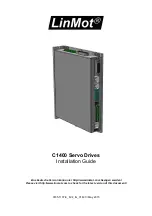
Section 3 - On the Water
Page 24
90-879172181
eng
FEBRUARY 2011
Safe Boating Suggestions
In order to safely enjoy the waterways, familiarize yourself with local and all other governmental boating regulations and restrictions,
and also consider the following suggestions.
•
Know and obey all nautical rules and laws of the waterways.
Cummins MerCruiser Diesel strongly recommends that all powerboat operators complete a boating safety course. Courses are
offered in the U.S.A. by the U.S. Coast Guard Auxiliary, the Power Squadron, the Red Cross, and your state or provincial boating
law enforcement agency. Inquiries may be made to the Boating Hotline at 1‑800‑368‑5647 or the Boat U.S. Foundation at
1‑800‑336‑BOAT.
•
Perform safety checks and required maintenance.
Follow a regular schedule and ensure that all repairs are properly made.
•
Check safety equipment on board.
Here are some suggestions of the types of safety equipment to carry when boating:
Approved fire extinguishers
Paddle or oar
Signal devices: flashlight, rockets or flares, flag, and whistle or horn
Transistor radio
Tools necessary for minor repairs
First aid kit and instructions
Anchor and extra anchor line
Waterproof storage containers
Manual bilge pump and extra drain plugs
Spare operating equipment, batteries, bulbs, and fuses
Drinking water
Compass and map or chart of the area
•
Watch for signs of weather change and avoid foul weather and rough-sea boating.
•
Tell someone where you are going and when you expect to return.
•
Passenger boarding.
Stop the engine whenever passengers are boarding, unloading, or are near the back (stern) of the
boat. Shifting the drive unit into neutral is not sufficient.
•
Use personal flotation devices
. Federal law requires that there be a U. S. Coast Guard–approved, wearable‑type life jacket
(personal flotation device), correctly sized and readily accessible for every person aboard, plus a throwable cushion or ring.
We strongly advise that everyone wear a life jacket at all times while in the boat.
•
Prepare other boat operators.
Instruct at least one person aboard in the basics of starting and operating the engine and
handling the boat in case the driver becomes disabled or falls overboard.
•
Do not overload your boat.
Most boats are rated and certified for maximum load (weight) capacities (refer to your boat
capacity plate). Know your boat’s operating and loading limitations. Know if your boat will float if full of water. When in doubt,
contact your authorized Cummins MerCruiser Diesel dealer/distributor or the boat manufacturer.
•
Ensure that everyone in the boat is properly seated.
Do not allow anyone to sit or ride on any part of the boat that was
not intended for such use. This includes the backs of seats, gunwales, transom, bow, decks, raised fishing seats, and any
rotating fishing seat; anywhere that sudden unexpected acceleration, sudden stopping, unexpected loss of boat control or
sudden boat movement could cause a person to be thrown overboard or into the boat. Ensure that all passengers have a
proper seat and are in it before any boat movement.
•
Never be under the influence of alcohol or drugs while boating (it is the law).
Alcohol or drugs impairs your judgment
and greatly reduce your ability to react quickly.
•
Know your boating area and avoid hazardous locations.
•
Be alert.
The operator of the boat is responsible by law to maintain a proper lookout by sight and hearing. The operator must
have an unobstructed view particularly to the front. No passengers, load, or fishing seats should block the operator's view
when operating the boat above idle or planing transition speed. Watch out for others, keep your eyes on the the water, and
be aware of your wake.
•
Never drive your boat directly behind a water skier in case the skier falls.
As an example, your boat traveling at 40 km/h
(25 MPH) will overtake a fallen skier who was 61 m (200 ft.) in front of you in five seconds.
•
Watch fallen skiers.
When using your boat for water skiing or similar activities, always keep a fallen or down skier on the
operator’s side of the boat while returning to attend to the skier. The operator should always have the down skier in sight and
never back up to the skier or anyone in the water.
Содержание 92-858058K01
Страница 4: ......
Страница 8: ...Page iv 90 879172181 eng FEBRUARY 2011...
Страница 78: ...Section 3 On the Water Notes Page 70 90 879172181 eng FEBRUARY 2011...
Страница 87: ...Section 5 Maintenance 90 879172181 eng FEBRUARY 2011 Page 79 Date Maintenance Performed Engine Hours...
Страница 128: ...Section 5 Maintenance Notes Page 120 90 879172181 eng FEBRUARY 2011...
Страница 140: ...Section 7 Troubleshooting Notes Page 132 90 879172181 eng FEBRUARY 2011...
Страница 146: ...Section 8 Customer Assistance Information Notes Page 138 90 879172181 eng FEBRUARY 2011...
















































